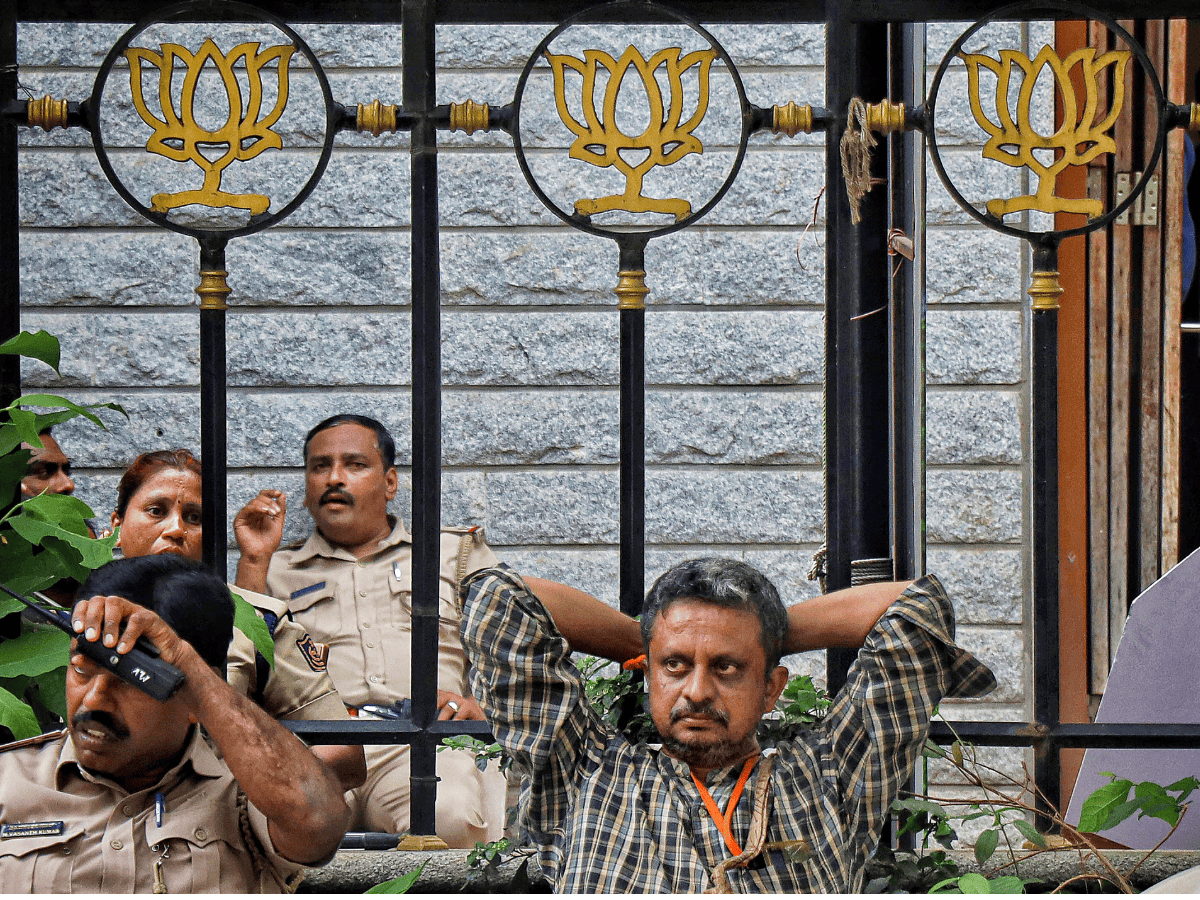
The results of the Karnataka elections declared on the weekend- resulting in a huge Congress victory- has come as a massive surprise to many. But if you study the trends carefully, the results are not surprising at all.
The Bharatiya Janata Party (BJP) is basically seen to be a north Indian party and dissemination of this culture in the south is bound to be seen as a failure. It can be predicted that in normal circumstances, BJP will fail to make significant pathways in other southern states as well.
“Can chole bhature be successful as a snack in interior Karnataka? Can it be more successful than masala dosa?” asks V B Natarajan, a trader based in Bengaluru, and proceeds to answer with an affirmative no.
Foundations of the BJP
To understand why the BJP did not succeed in South India one has to look carefully at its history. BJP was founded as Jana Sangh in 1951 by Syama Prasad Mookerjee, a professional neta, who was disturbed by the partition of India. He took the support of the Nagpur-based RSS to run the organization because he had no team of his own. The sudden and suspicious death of Mookerjee in 1953 in Kashmir brought Jana Sangh under the total control of the RSS. In those days, Jana Sangh’s main support base was in Delhi which was filled with refugees displaced from West Pakistan.
The refugees mainly supported the party. Sikhs were however not the supporters of Jana Sangh because the Sikh gurus were ‘insulted’ in Pakistan (when it was part of India) by Dayananda Saraswati in his lifetime. This was much before Independence. Dayananda was one of the promoters of Arya Samaj. The Sikhs for strange reasons have carried this hurt with them and did not associate themselves closely ever with the party in the future. Thus the BJP became an outfit with a Delhi color and a north Indian hue.
The Somnath effect on Gujarat
Gujarat fell to Bharatiya Janata Party (BJP)- the outfit to which Jana Sangh had converted in the early 1990s. Gujarat carries a long memory of ‘hurt’ from the pillages of Mahmud of Ghazni in the 13th century who came continually to sack the Somnath temple. The memories were strengthened by modern-day authors like K M Munshi (who was a Congressman and he was at the court of the Nizam of Hyderabad as agent-general of the Union of India). He also wrote a highly evocative book called ‘Jai Somnath’ describing the sacking of the temple that is read widely in Gujarat even today. Though otherwise, Gujarat was not in the pathway of invaders, the feeling of exploitation has become ingrained in the state through the contents of the book.
Later in the 1960s, he also became a founder of the Vishwa Hindu Parishad (VHP). He had also been Nehru’s agriculture minister.
The Patels of Gujarat were the mainstay of the Congress in the 1960s -1980s but they shifted en masse to the BJP in the late 1980s after reservation policies introduced by the long-time Congress chief minister Madhavsingh Solanki. This shift was a permanent one. The Patels wanted the reservations to empower them: they had been downtrodden for centuries but the Green Revolution made them economically prosperous. They wanted job reservations for themselves too.
Modi ‘became’ North Indian
Narendra Modi when he became Prime Minister migrated to Delhi and he chose Varanasi to contest his Lok Sabha seat (as also Vadodara in Gujarat). Once elected, he retained the Varanasi seat. Thus in one stroke, Modi converted himself to a North Indian or became a North Indian representative. It is with this north Indian image that Modi entered the electoral battle in Karnataka. He, therefore, found little resonance among people.
Coastal Karnataka
The only exception was the area on the west coast around Mangalore which is traditionally a stronghold of the Jains. The local Jains have been supporters of the BJP for a long – because RSS started working in this area for a very long time. In urban centers like Bengaluru also the saffron party got some resonance because people have got mixed in such places.
But the lesson is clear: if BJP has to succeed in South India it has to become a South Indian party. It can never succeed as a North India conglomerate.



